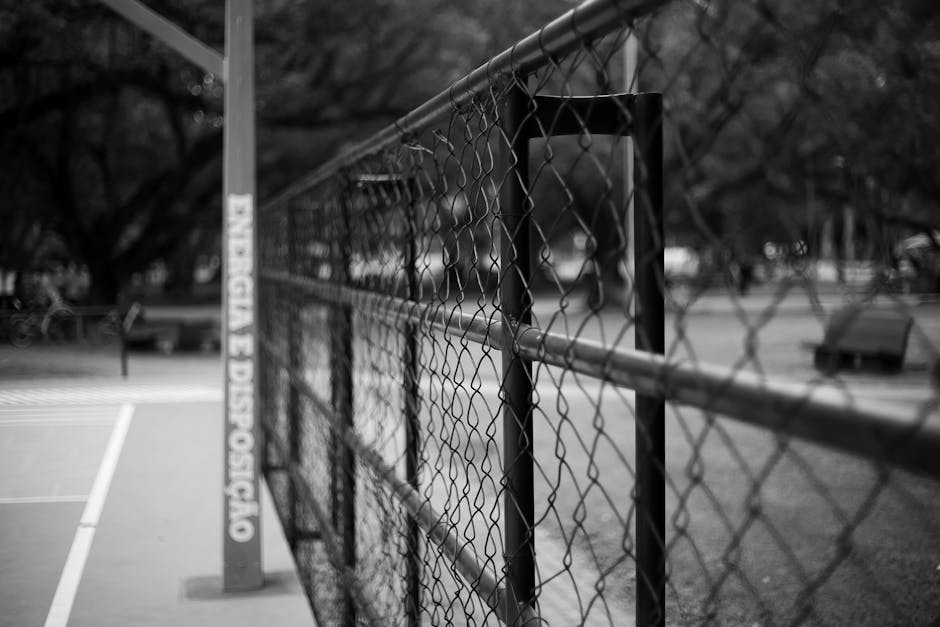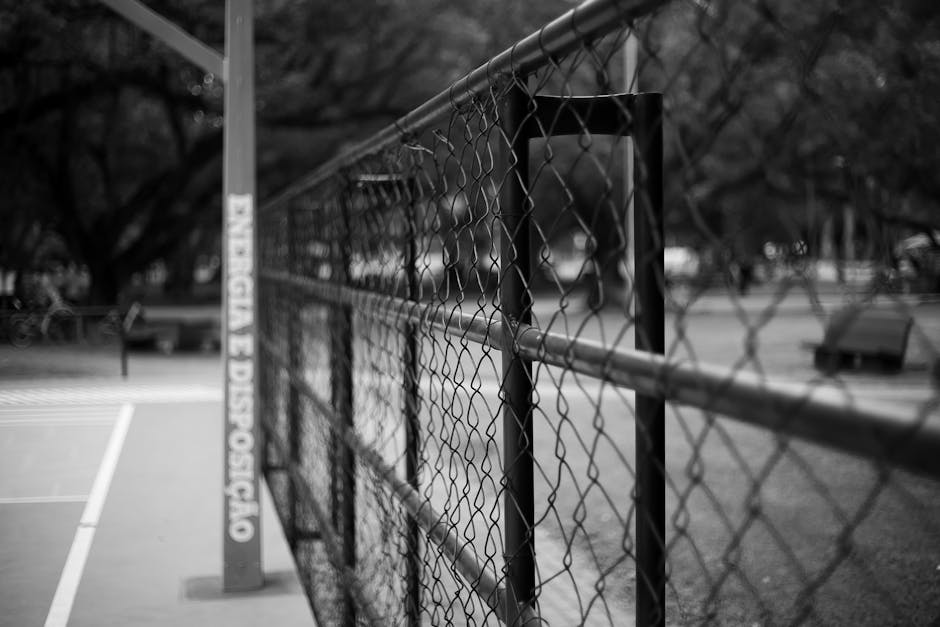Table of Contents
- Introduction
- Exploring the Depths of Human Emotions
- Unveiling the Beauty in Imperfection
- Capturing the Essence of Solitude
- The Power of Vulnerability in Art
- Shedding Light on Hidden Stories
- Embracing the Unknown Through Photography
- Finding Strength in Fragility
- The Subtle Art of Self-Reflection
- Navigating Life’s Uncertainties Through Creativity
- Q&A
- Conclusion
“Capturing the hidden beauty in every moment.”
Introduction
The Unseen Lens: Disposition is a collection of essays that explores the ways in which our personal dispositions shape our perceptions of the world around us. Through a series of thought-provoking reflections, the author delves into the complexities of human nature and the ways in which our individual perspectives can influence our understanding of reality.
Exploring the Depths of Human Emotions
The human experience is a complex tapestry of emotions, thoughts, and behaviors that shape our interactions with the world around us. One of the most intriguing aspects of this experience is the concept of disposition, which refers to the underlying tendencies or inclinations that influence how we perceive and respond to various situations. While disposition is often thought of as an internal trait that is fixed and unchanging, research suggests that it is a dynamic and multifaceted construct that can be influenced by a variety of factors.
One of the key factors that can shape our disposition is our upbringing and early life experiences. Studies have shown that individuals who grow up in nurturing and supportive environments tend to develop more positive dispositions, characterized by traits such as optimism, resilience, and empathy. On the other hand, those who experience trauma, neglect, or abuse in their formative years are more likely to develop negative dispositions, marked by traits such as distrust, anger, and anxiety. These early experiences can have a lasting impact on our emotional well-being and how we navigate the world as adults.
In addition to our upbringing, our genetic makeup also plays a role in shaping our disposition. Research has shown that certain personality traits, such as extraversion, neuroticism, and conscientiousness, have a strong genetic component and are relatively stable over time. These traits can influence how we perceive and respond to various situations, as well as how we interact with others. For example, individuals who are high in extraversion tend to be outgoing, sociable, and energetic, while those who are high in neuroticism may be prone to anxiety, depression, and mood swings.
Furthermore, our disposition can also be influenced by our social environment and the people we surround ourselves with. Studies have shown that we are more likely to adopt the attitudes, beliefs, and behaviors of those around us, a phenomenon known as social contagion. This means that if we spend time with positive, optimistic people, we are more likely to develop a similar disposition ourselves. Conversely, if we are surrounded by negative, pessimistic individuals, we may find ourselves adopting a more cynical and distrustful outlook on life.
It is important to note that while our disposition may be influenced by a variety of factors, it is not set in stone. Research has shown that we have the ability to change and shape our disposition through conscious effort and practice. For example, engaging in activities that promote mindfulness, gratitude, and self-reflection can help cultivate a more positive disposition and enhance our emotional well-being. Similarly, seeking therapy or counseling can provide valuable insights and tools for addressing negative thought patterns and behaviors that may be holding us back.
In conclusion, disposition is a complex and multifaceted construct that influences how we perceive and respond to the world around us. While our upbringing, genetics, and social environment play a role in shaping our disposition, we also have the power to change and shape it through conscious effort and practice. By exploring the depths of our emotions and understanding the unseen lens through which we view the world, we can cultivate a more positive and resilient disposition that enhances our overall well-being.
Unveiling the Beauty in Imperfection
In a world that often values perfection and flawlessness, it can be easy to overlook the beauty that lies in imperfection. The concept of imperfection is often associated with negativity, but what if we were to shift our perspective and see imperfection as something to be celebrated rather than shunned? This is where the unseen lens of disposition comes into play.
Disposition refers to one’s inherent qualities of mind and character, and how they shape our outlook on life. It is through our disposition that we can learn to appreciate imperfection in all its forms. By cultivating a positive disposition, we can begin to see the beauty in imperfection and embrace it as a natural part of life.
One way in which disposition can help us unveil the beauty in imperfection is by fostering a sense of acceptance and gratitude. When we approach life with a disposition of acceptance, we are able to see imperfections not as failures or shortcomings, but as opportunities for growth and learning. By embracing imperfection with gratitude, we can begin to see the unique beauty that lies within it.
Another way in which disposition can help us appreciate imperfection is by fostering a sense of empathy and compassion. When we approach others with a disposition of empathy, we are able to see past their imperfections and connect with them on a deeper level. By showing compassion towards others, we can begin to see the beauty in their imperfections and appreciate them for who they truly are.
Disposition also plays a key role in helping us cultivate resilience and perseverance in the face of imperfection. When we approach challenges with a positive disposition, we are able to see setbacks not as failures, but as opportunities for growth and self-improvement. By cultivating resilience and perseverance, we can learn to embrace imperfection as a natural part of the journey towards success.
In order to truly unveil the beauty in imperfection, it is important to cultivate a disposition of mindfulness and presence. By approaching life with a mindful disposition, we are able to fully appreciate the beauty that surrounds us, even in the most imperfect moments. By being present in the moment, we can begin to see the beauty in imperfection and embrace it as a natural part of the human experience.
In conclusion, the unseen lens of disposition plays a crucial role in helping us unveil the beauty in imperfection. By cultivating a positive disposition of acceptance, gratitude, empathy, compassion, resilience, perseverance, mindfulness, and presence, we can begin to see imperfection as something to be celebrated rather than shunned. Through our disposition, we can learn to appreciate the unique beauty that lies within imperfection and embrace it as a natural part of life.
Capturing the Essence of Solitude
In the world of photography, capturing the essence of solitude is a delicate art form that requires a keen eye and a deep understanding of human emotion. The unseen lens through which a photographer views the world plays a crucial role in conveying the feelings of isolation, introspection, and contemplation that are often associated with solitude.
One of the key elements in capturing the essence of solitude is the photographer’s disposition. This refers to their mindset, attitude, and emotional state at the time of taking the photograph. A photographer who is in tune with their own emotions and able to empathize with the subject of their photograph is more likely to capture the true essence of solitude.
When a photographer approaches a subject with a sense of empathy and understanding, they are able to create a connection that goes beyond the physical appearance of the subject. This connection allows the photographer to capture the subject’s innermost thoughts and emotions, resulting in a photograph that conveys a sense of solitude and introspection.
In order to develop this sense of empathy and understanding, a photographer must be willing to spend time with their subject, observing their behavior, body language, and facial expressions. By paying attention to these subtle cues, the photographer can gain insight into the subject’s state of mind and emotions, allowing them to capture the essence of solitude in a way that is authentic and compelling.
Another important aspect of capturing the essence of solitude is the use of light and shadow. Light and shadow play a crucial role in creating mood and atmosphere in a photograph, and can be used to convey a sense of isolation and introspection. By carefully manipulating the lighting in a scene, a photographer can create a sense of depth and dimension that enhances the emotional impact of the photograph.
In addition to light and shadow, composition also plays a key role in capturing the essence of solitude. The way in which a photographer frames their subject, the angles they choose, and the overall composition of the photograph can all contribute to the emotional impact of the image. By carefully considering these elements, a photographer can create a photograph that conveys a sense of solitude and introspection in a powerful and evocative way.
Ultimately, capturing the essence of solitude requires a combination of technical skill, emotional intelligence, and artistic vision. By approaching their subject with empathy and understanding, paying attention to light and shadow, and carefully considering composition, a photographer can create images that resonate with viewers on a deep emotional level.
In a world that is increasingly connected and fast-paced, the ability to capture the essence of solitude is more important than ever. By using the unseen lens of disposition to view the world with empathy and understanding, photographers can create images that speak to the universal human experience of solitude and introspection.
The Power of Vulnerability in Art

Art has long been a medium through which artists express their deepest emotions, thoughts, and vulnerabilities. The power of vulnerability in art lies in its ability to connect with viewers on a deeply emotional level, evoking empathy, understanding, and introspection. Through the lens of vulnerability, artists are able to convey raw and authentic emotions that resonate with audiences in a profound way.
One of the key aspects of vulnerability in art is the willingness of the artist to expose their innermost thoughts and feelings to the world. This act of vulnerability requires courage and a willingness to be open and honest about one’s own experiences, fears, and insecurities. By allowing themselves to be vulnerable, artists create a sense of intimacy and authenticity in their work that is both compelling and relatable.
In her book “Daring Greatly,” researcher and author Brené Brown explores the concept of vulnerability and its importance in fostering connection and creativity. Brown argues that vulnerability is not a sign of weakness, but rather a source of strength and courage. By embracing vulnerability, artists are able to tap into their deepest emotions and create art that is truly authentic and meaningful.
The power of vulnerability in art lies in its ability to evoke empathy and understanding in viewers. When artists are willing to expose their vulnerabilities, they invite viewers to connect with their work on a personal level, creating a sense of shared experience and emotional resonance. This connection can be transformative, allowing viewers to see themselves reflected in the art and to gain a deeper understanding of their own emotions and experiences.
Through the lens of vulnerability, artists are able to explore complex and challenging themes in their work. By delving into their own fears, insecurities, and struggles, artists are able to create art that is honest, raw, and deeply moving. This authenticity allows viewers to engage with the art in a meaningful way, sparking conversations and reflections on important issues such as mental health, identity, and social justice.
The power of vulnerability in art also lies in its ability to inspire creativity and innovation. When artists are willing to take risks and push the boundaries of their comfort zones, they are able to create art that is truly original and groundbreaking. By embracing vulnerability, artists are able to tap into their innermost thoughts and emotions, allowing them to create work that is both deeply personal and universally resonant.
In conclusion, the power of vulnerability in art is a force to be reckoned with. By embracing vulnerability, artists are able to create work that is authentic, compelling, and emotionally resonant. Through the lens of vulnerability, artists are able to connect with viewers on a deeply emotional level, evoking empathy, understanding, and introspection. The willingness of artists to expose their innermost thoughts and feelings allows for a sense of intimacy and authenticity in their work that is both compelling and relatable. Ultimately, vulnerability in art is a powerful tool for fostering connection, creativity, and emotional growth.
Shedding Light on Hidden Stories
In the world of photography, the lens is often seen as the most important tool for capturing images. It is the piece of equipment that allows photographers to focus on specific subjects, adjust lighting, and create stunning visual compositions. However, there is another lens that is equally important but often goes unnoticed – the lens of disposition.
Disposition refers to a person’s inherent qualities of mind and character. It is the lens through which we view the world, interpret events, and interact with others. Just as a camera lens can distort or enhance an image, our disposition can color our perceptions and shape our experiences.
When it comes to photography, a photographer’s disposition can have a significant impact on the images they capture. A positive disposition can lead to images that are vibrant, full of life, and convey a sense of joy and optimism. On the other hand, a negative disposition can result in images that are dark, moody, and convey a sense of despair or hopelessness.
One of the key aspects of disposition is mindset. A growth mindset, characterized by a belief in one’s ability to learn and grow, can lead to images that are innovative, creative, and push the boundaries of traditional photography. Conversely, a fixed mindset, characterized by a belief that one’s abilities are limited and unchangeable, can result in images that are safe, predictable, and lack originality.
Another important aspect of disposition is empathy. Empathy is the ability to understand and share the feelings of others. A photographer with a high level of empathy can capture images that are deeply emotional, resonant, and connect with viewers on a profound level. By putting themselves in the shoes of their subjects, these photographers are able to tell stories that are authentic, compelling, and thought-provoking.
In addition to mindset and empathy, curiosity is another key aspect of disposition that can greatly impact a photographer’s work. Curiosity is the desire to learn, explore, and discover new things. Photographers who approach their craft with a sense of curiosity are constantly seeking out new perspectives, experimenting with different techniques, and pushing themselves to grow and evolve as artists.
Ultimately, the lens of disposition is a powerful tool that can shape the way we see the world and the stories we tell through our photography. By cultivating a positive mindset, fostering empathy, and embracing curiosity, photographers can create images that are not only visually stunning but also emotionally resonant and intellectually engaging.
As we continue to explore the world through the lens of disposition, we are reminded of the importance of self-awareness, introspection, and personal growth. By understanding our own disposition and how it influences our work, we can become more intentional and purposeful in our photography, creating images that not only reflect the world around us but also reveal the hidden stories that lie beneath the surface.
Embracing the Unknown Through Photography
Photography has long been celebrated as a powerful medium for capturing the world around us. From stunning landscapes to intimate portraits, photographers have the ability to freeze moments in time and share them with the world. However, there is a lesser-known aspect of photography that goes beyond simply capturing what is visible to the naked eye. This aspect is known as disposition, or the unseen lens through which a photographer views the world.
Disposition in photography refers to the unique perspective and mindset that a photographer brings to their work. It is the intangible quality that shapes how they see and interpret the world around them. While technical skills and equipment are important in photography, disposition is what sets one photographer apart from another. It is what gives their work depth, emotion, and meaning.
One of the key elements of disposition in photography is the ability to embrace the unknown. This means being open to new experiences, perspectives, and ways of seeing the world. It requires a willingness to step outside of one’s comfort zone and explore the unfamiliar. By embracing the unknown, photographers can push the boundaries of their creativity and produce work that is truly unique and compelling.
Embracing the unknown through photography also involves a sense of curiosity and wonder. Photographers who approach their work with a sense of curiosity are more likely to notice the small details and moments that others may overlook. They are constantly seeking out new subjects, angles, and lighting conditions to capture the beauty and complexity of the world around them. This sense of wonder fuels their creativity and drives them to push the limits of what is possible with their camera.
Another important aspect of disposition in photography is empathy. Empathy is the ability to understand and share the feelings of others, and it plays a crucial role in creating meaningful and impactful photographs. Photographers who approach their subjects with empathy are able to capture the essence of who they are and what they are feeling. This allows them to create images that resonate with viewers on a deep emotional level.
In addition to embracing the unknown and approaching their work with empathy, photographers with a strong disposition also possess a sense of authenticity. Authenticity in photography means being true to oneself and one’s vision. It means not conforming to trends or trying to imitate the work of others, but instead staying true to one’s own unique style and voice. Authentic photographers are able to create work that is genuine, honest, and reflective of who they are as individuals.
Ultimately, disposition in photography is about more than just taking pictures. It is about seeing the world in a new light, connecting with others on a deeper level, and expressing oneself authentically through the medium of photography. By embracing the unknown, approaching their work with empathy, and staying true to their own unique vision, photographers can create images that are not only visually stunning but also emotionally resonant and thought-provoking.
In conclusion, disposition is the unseen lens through which photographers view the world. It is what gives their work depth, emotion, and meaning. By embracing the unknown, approaching their work with empathy, and staying true to their own unique vision, photographers can create images that are truly powerful and transformative. So the next time you pick up your camera, remember to look through the lens of disposition and see the world in a whole new way.
Finding Strength in Fragility
In the world of photography, the lens is a crucial component that captures the essence of a moment, freezing it in time for eternity. However, there is another lens that is equally important but often goes unnoticed – the lens of disposition. Our disposition, or our inherent qualities of mind and character, shapes how we perceive the world around us and how we respond to the challenges that life throws our way.
Our disposition is like a filter through which we view the world. It colors our experiences, influences our decisions, and ultimately determines our outlook on life. Just as a photographer chooses the right lens to capture a specific mood or emotion in a photograph, our disposition shapes how we interpret and react to the events that unfold in our lives.
One of the key aspects of disposition is resilience. Resilience is the ability to bounce back from adversity, to adapt to change, and to thrive in the face of challenges. People with a resilient disposition are able to see setbacks as opportunities for growth, to find strength in their fragility, and to emerge stronger and more resilient than before.
Research has shown that resilience is not a fixed trait but rather a skill that can be developed and nurtured over time. By cultivating a positive mindset, practicing self-care, and seeking support from others, we can build our resilience and learn to navigate life’s ups and downs with grace and courage.
Another important aspect of disposition is gratitude. Gratitude is the practice of acknowledging and appreciating the good things in our lives, no matter how small or seemingly insignificant. People with a grateful disposition are able to find joy and fulfillment in everyday moments, to cultivate a sense of abundance and contentment, and to approach life with a sense of wonder and awe.
Studies have shown that gratitude is strongly linked to overall well-being and mental health. By focusing on the positive aspects of our lives and expressing gratitude for the blessings we have, we can cultivate a more positive outlook, reduce stress and anxiety, and increase our overall sense of happiness and fulfillment.
In addition to resilience and gratitude, another important aspect of disposition is empathy. Empathy is the ability to understand and share the feelings of others, to connect with people on a deep emotional level, and to show compassion and kindness in our interactions with others. People with an empathetic disposition are able to build strong and meaningful relationships, to foster a sense of community and belonging, and to make a positive impact on the world around them.
Empathy is a powerful force for good in the world. By putting ourselves in the shoes of others, by listening with an open heart and mind, and by showing kindness and compassion to those in need, we can create a more inclusive and compassionate society where everyone feels seen, heard, and valued.
In conclusion, our disposition is like an unseen lens that shapes how we view the world and how we respond to the challenges that life throws our way. By cultivating resilience, gratitude, and empathy, we can find strength in our fragility, build meaningful connections with others, and create a more positive and compassionate world for ourselves and those around us. Just as a photographer uses different lenses to capture different aspects of a scene, we can use our disposition to capture the beauty and complexity of life in all its richness and diversity.
The Subtle Art of Self-Reflection
Self-reflection is a powerful tool that allows individuals to gain insight into their thoughts, feelings, and behaviors. It involves taking a step back and examining oneself from an objective perspective, which can lead to personal growth and self-improvement. One aspect of self-reflection that is often overlooked is disposition, or the way in which individuals approach and respond to situations.
Disposition refers to an individual’s inherent qualities, such as temperament, character, and attitude. It is the lens through which we view the world and interpret our experiences. Our disposition influences how we perceive and react to events, as well as how we interact with others. Understanding our disposition can help us better understand ourselves and make positive changes in our lives.
One key aspect of disposition is temperament, which refers to our natural tendencies and inclinations. Some people are naturally more outgoing and sociable, while others are more introverted and reserved. Our temperament can influence how we approach social situations, handle stress, and make decisions. By reflecting on our temperament, we can gain insight into our strengths and weaknesses and learn how to leverage them to our advantage.
Character is another important aspect of disposition. Character refers to our moral and ethical values, as well as our integrity and honesty. Our character shapes our actions and decisions, and reflects who we are as individuals. By reflecting on our character, we can identify areas where we may need to improve and work towards becoming the best version of ourselves.
Attitude is also a key component of disposition. Attitude refers to our outlook on life, as well as our beliefs and perceptions. A positive attitude can help us overcome challenges and setbacks, while a negative attitude can hold us back and limit our potential. By reflecting on our attitude, we can identify any negative thought patterns or beliefs that may be hindering our progress and work towards developing a more positive mindset.
Self-reflection is a continuous process that requires honesty, openness, and self-awareness. It involves taking the time to pause and reflect on our thoughts, feelings, and behaviors, and to consider how they are influenced by our disposition. By examining our disposition, we can gain a deeper understanding of ourselves and make meaningful changes in our lives.
One way to practice self-reflection is through journaling. Keeping a journal allows us to record our thoughts and feelings, as well as our reactions to different situations. By reviewing our journal entries, we can identify patterns in our behavior and gain insight into how our disposition influences our actions. Journaling can also help us track our progress and set goals for personal growth and development.
Another way to practice self-reflection is through mindfulness meditation. Mindfulness meditation involves focusing on the present moment and observing our thoughts and feelings without judgment. By practicing mindfulness, we can become more aware of our disposition and how it impacts our daily lives. Mindfulness meditation can also help us cultivate a sense of inner peace and clarity, which can lead to greater self-awareness and personal growth.
In conclusion, disposition plays a crucial role in self-reflection and personal development. By examining our temperament, character, and attitude, we can gain insight into our inherent qualities and make positive changes in our lives. Self-reflection is a powerful tool that can help us become more self-aware, improve our relationships, and achieve our goals. By taking the time to reflect on our disposition, we can unlock our full potential and live a more fulfilling and meaningful life.
Navigating Life’s Uncertainties Through Creativity
In the midst of life’s uncertainties, one can find solace and clarity through the lens of creativity. The ability to navigate through the unknown with a sense of purpose and direction is a skill that can be honed through various creative outlets. Whether it be through art, music, writing, or any other form of expression, creativity has the power to illuminate the path forward and provide a sense of grounding in the face of chaos.
Research has shown that engaging in creative activities can have a profound impact on one’s mental health and well-being. By tapping into our creative potential, we are able to explore our emotions, thoughts, and experiences in a way that allows for deeper understanding and self-reflection. This process of introspection can help us make sense of the world around us and find meaning in the midst of uncertainty.
Creativity also has the ability to foster resilience in the face of adversity. When we are faced with challenges and obstacles, creativity can serve as a coping mechanism that allows us to process our emotions and find new ways to approach difficult situations. By thinking outside the box and exploring alternative solutions, we are able to adapt to changing circumstances and overcome obstacles with grace and resilience.
Furthermore, creativity can help us cultivate a sense of curiosity and wonder in the world around us. By engaging in creative activities, we are able to see the world through a different lens and appreciate the beauty and complexity of life in all its forms. This sense of wonder can inspire us to explore new possibilities, take risks, and embrace the unknown with a sense of excitement and curiosity.
In essence, creativity is a powerful tool that can help us navigate life’s uncertainties with grace and resilience. By tapping into our creative potential, we are able to find meaning, purpose, and direction in the face of chaos. Whether it be through art, music, writing, or any other form of expression, creativity has the power to illuminate the path forward and guide us through the unknown with a sense of clarity and purpose.
As we continue to navigate the complexities of life, it is important to remember the power of creativity in helping us make sense of the world around us. By engaging in creative activities, we are able to tap into our innermost thoughts and emotions, explore new possibilities, and find meaning in the midst of uncertainty. Creativity has the ability to inspire us, challenge us, and ultimately help us navigate life’s uncertainties with grace and resilience.
Q&A
1. What is The Unseen Lens: Disposition?
A book by author J. J. Brown.
2. When was The Unseen Lens: Disposition published?
In 2020.
3. What genre does The Unseen Lens: Disposition fall under?
Science fiction.
4. Who is the main character in The Unseen Lens: Disposition?
A woman named Lacie.
5. What is the central theme of The Unseen Lens: Disposition?
Exploring the impact of technology on society.
6. Where does the story of The Unseen Lens: Disposition take place?
In a futuristic city.
7. What is the conflict in The Unseen Lens: Disposition?
Lacie’s struggle to navigate a world controlled by technology.
8. What are some key motifs in The Unseen Lens: Disposition?
Surveillance, identity, and rebellion.
9. How does The Unseen Lens: Disposition explore the concept of reality?
By questioning the boundaries between the virtual and physical worlds.
Conclusion
In conclusion, The Unseen Lens: Disposition explores the concept of how our attitudes and behaviors shape our perception of the world around us. Through examining the ways in which our disposition influences our interactions with others and our environment, the book highlights the importance of self-awareness and mindfulness in cultivating a more positive and fulfilling life.





